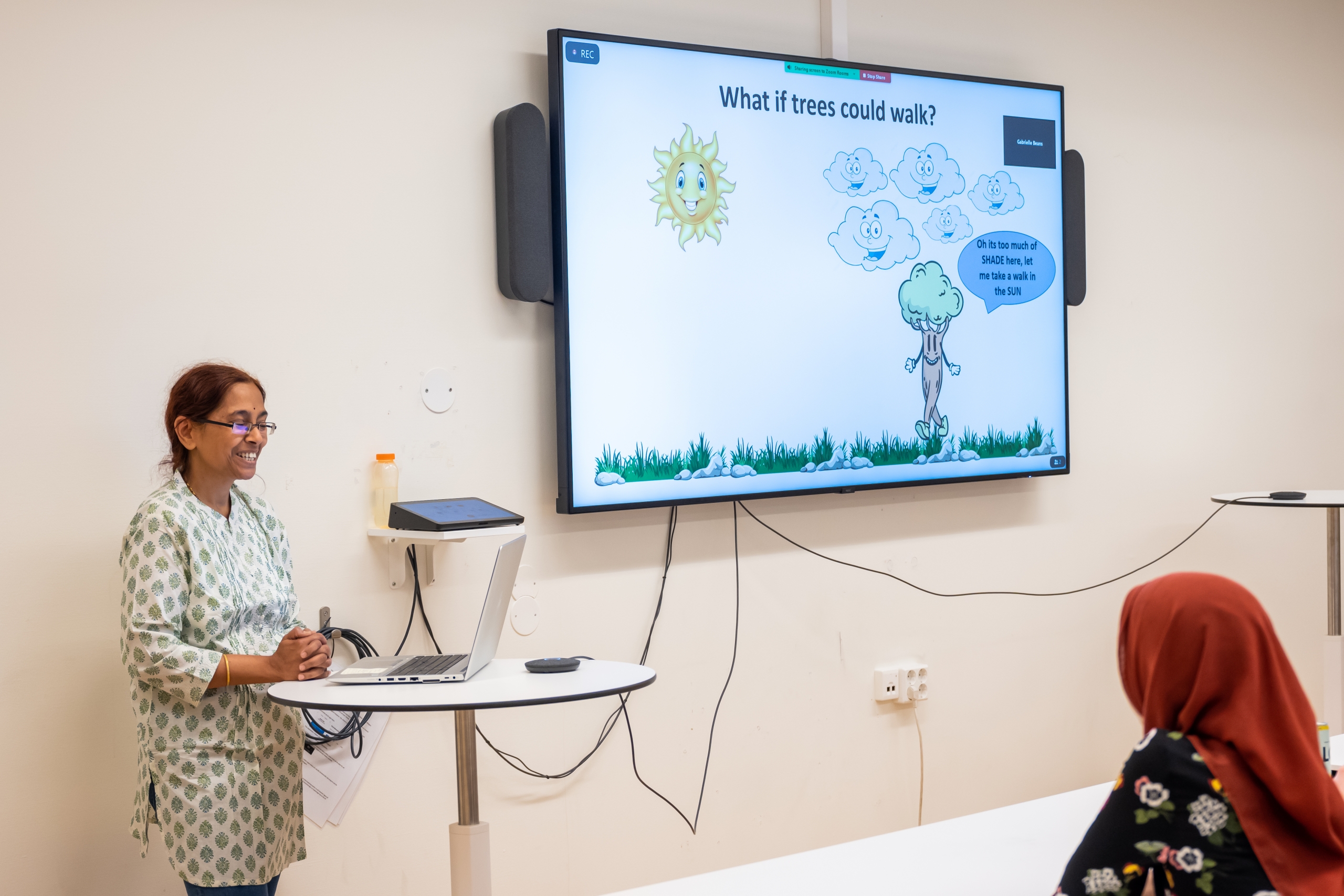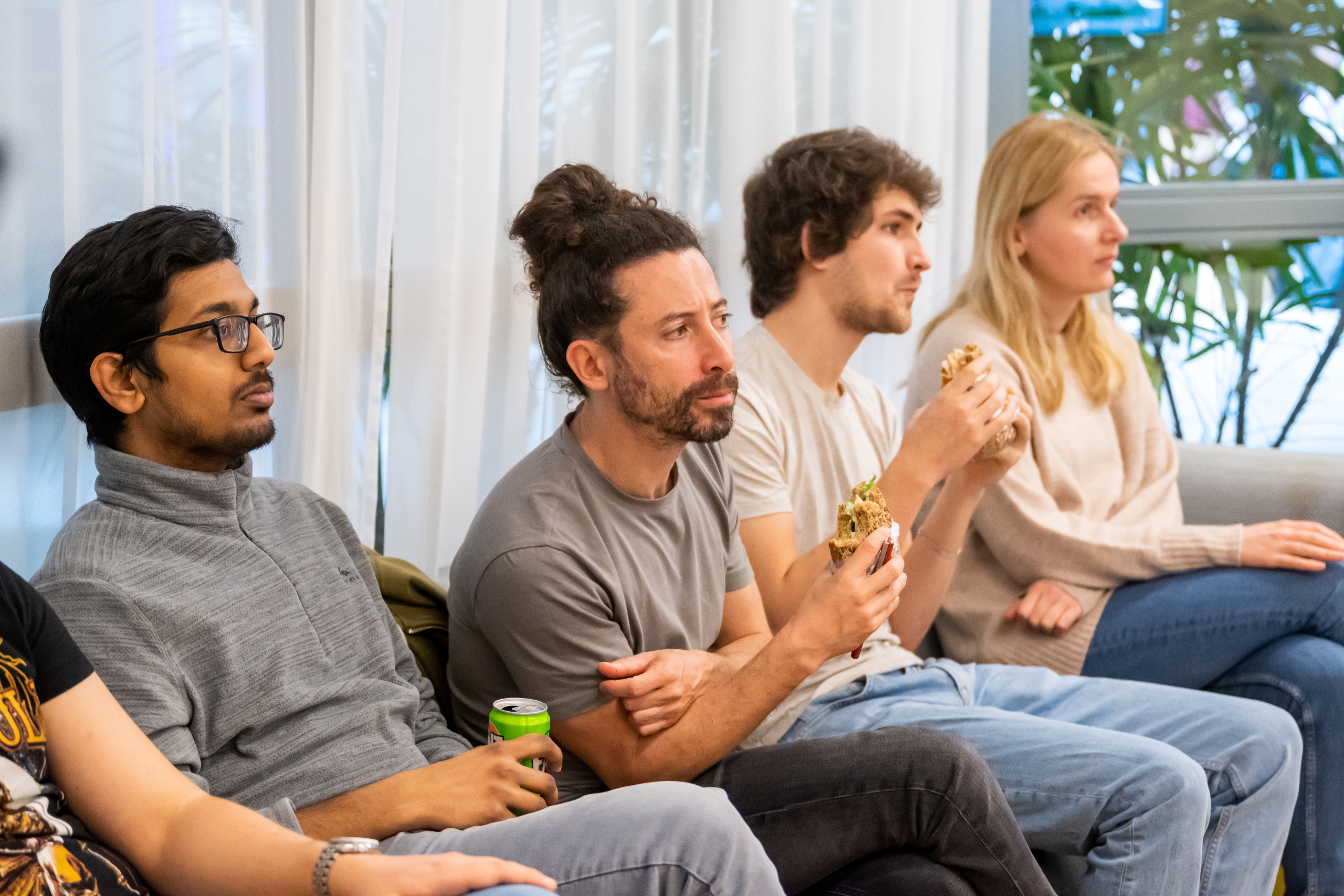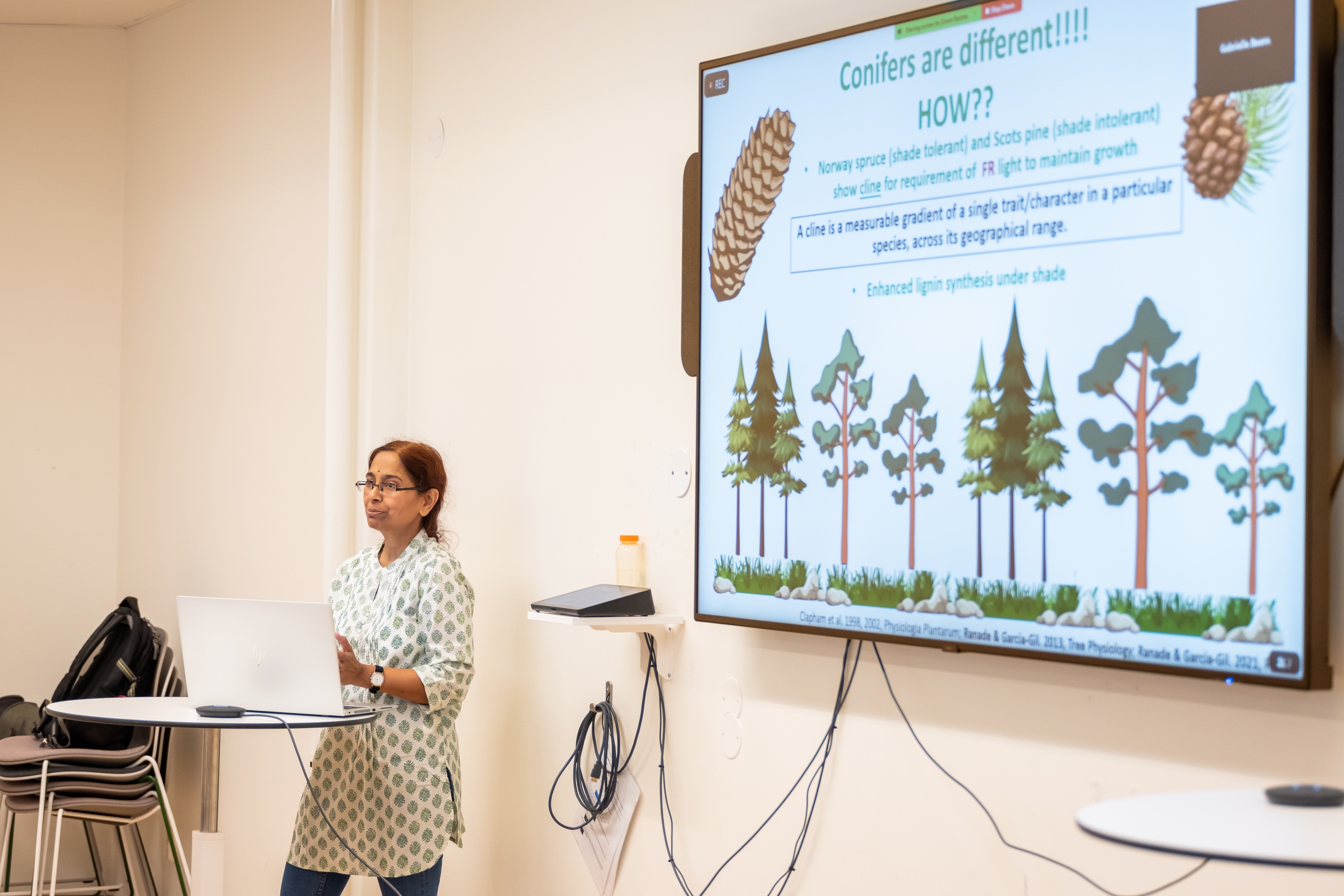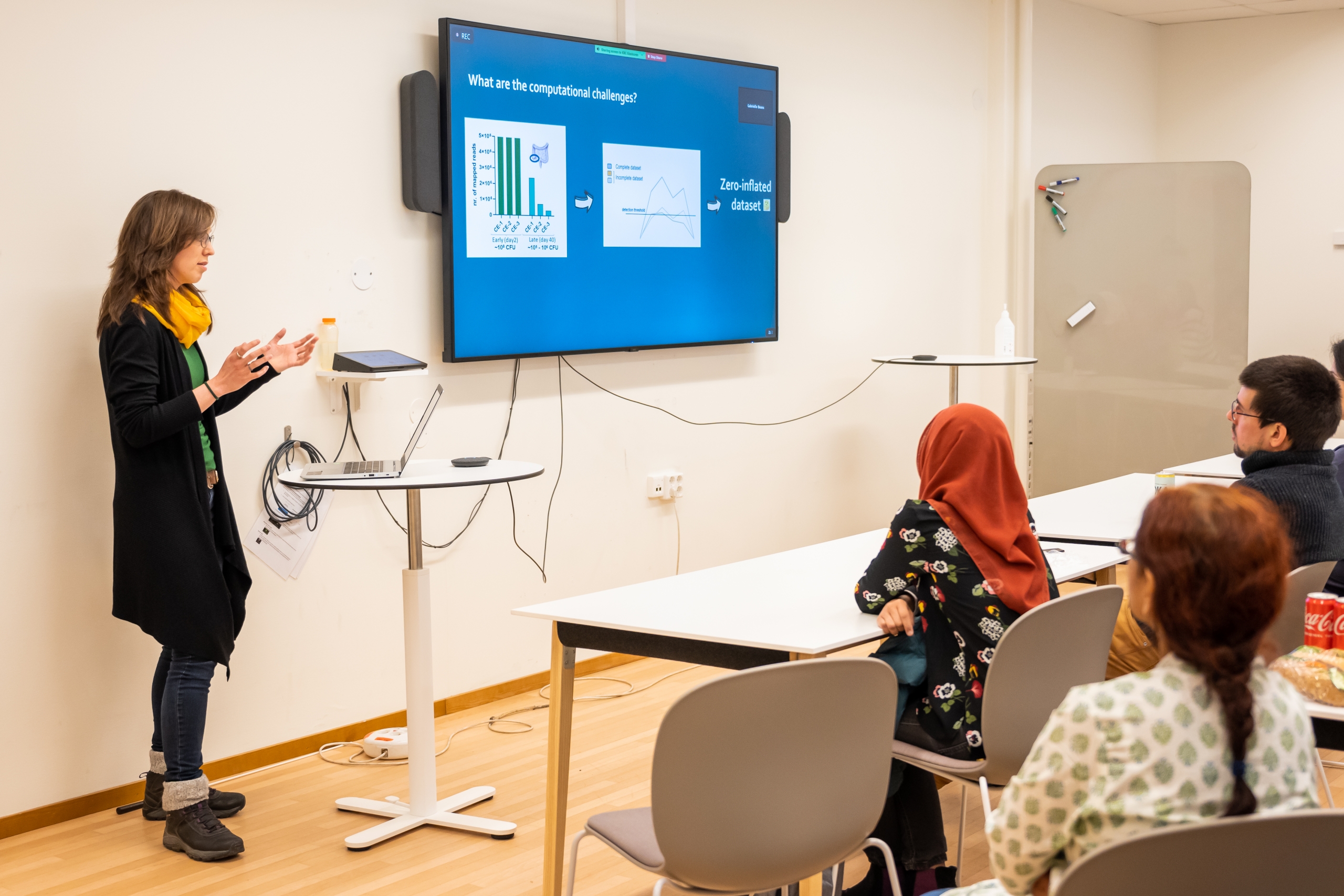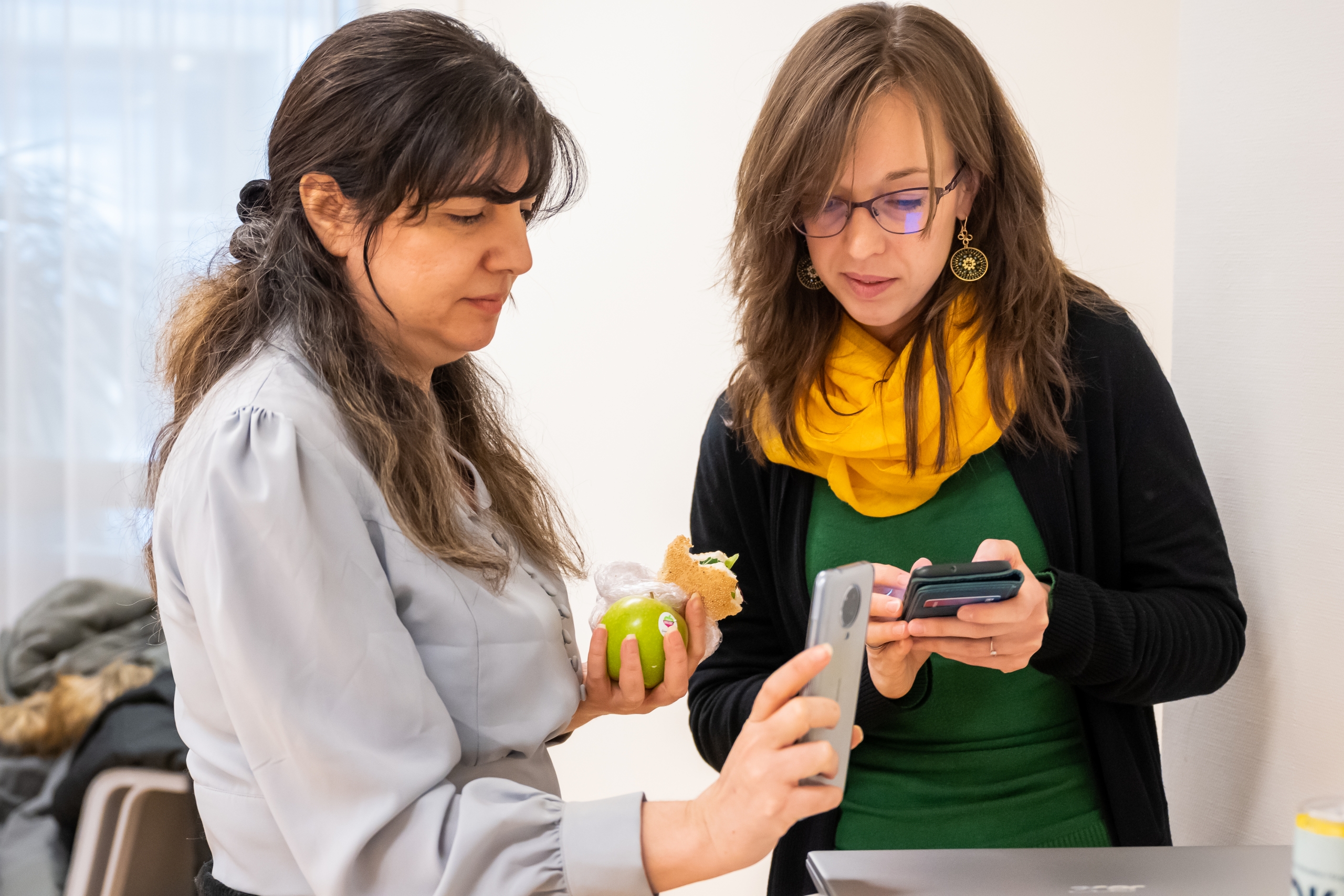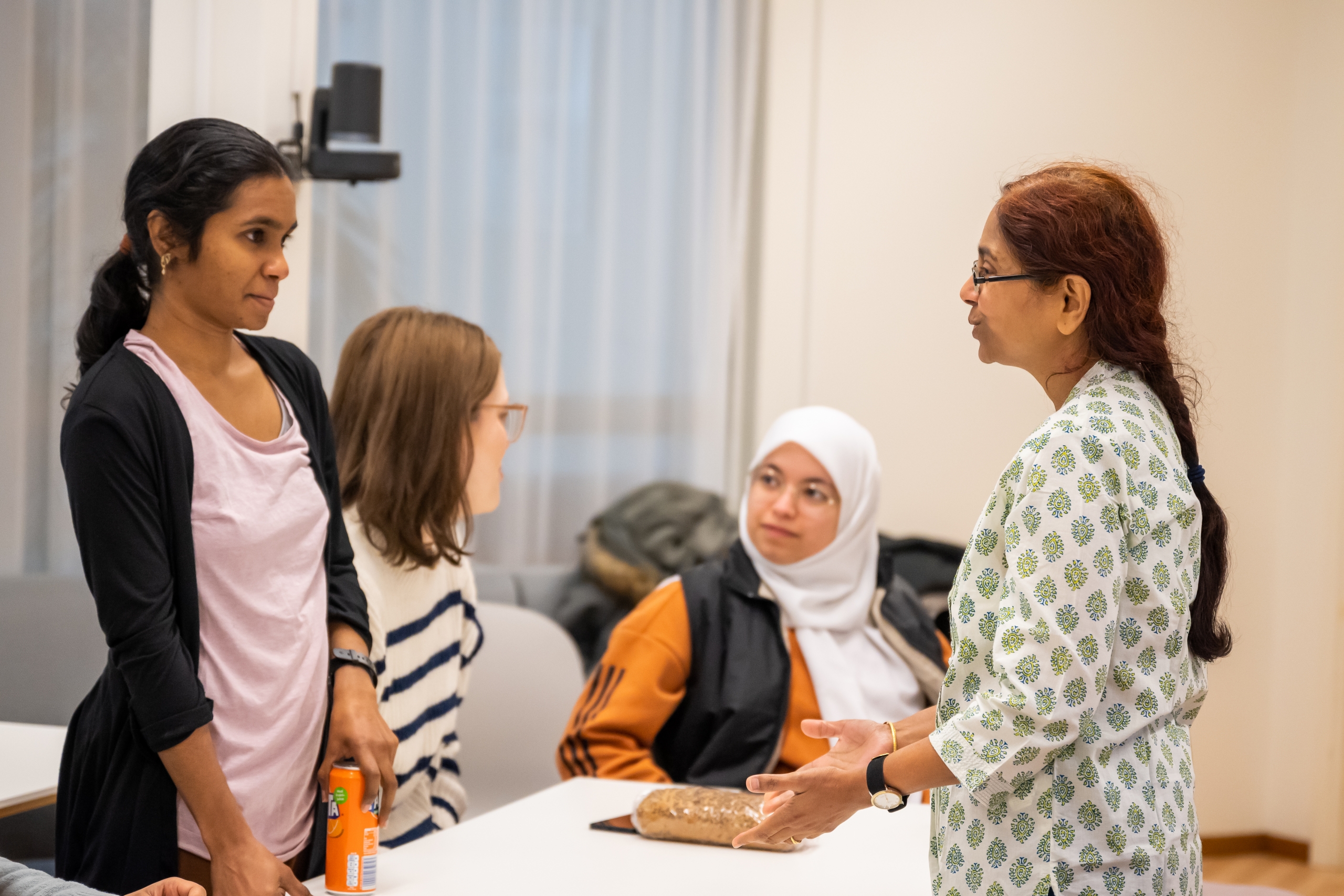Conifers adapting to light and using autoencoders on zero-filled data
April 27, 2023
Pitch 1: Sonali Ranade: Adaptation in the Christmas tree to light
Staff scientist, Department of Forest Genetics and Plant Physiology, Umeå Plant Science Centre, SLU
Local adaptation is the first step towards speciation and forms a key process for the evolution of a species and it reflects how the local population of a particular plant species tends to have a higher mean fitness in their native environment as compared to other environments. Norway spruce (Picea abies) is one of the most important tree species with reference to the forest industry and economy of Sweden. Shade or low light can be defined as the light condition that has higher amount of far-red light than the red wavelength. During the growing seasons in Sweden, the northern latitudes have extended periods of far-red light similar to shade conditions. Norway spruce is a shade tolerant conifer, yet shade is a stressful condition that can make spruce trees susceptible to diseases. Lignin is an important component of the cell wall of the plant cell which is the key structural element that gives support to the plants. Lignin provides basic barrier against pathogens and protects the plant. With application of technologies such as RNA sequencing and exome sequencing, we show that genes involved in the lignin pathway and immunity seem to play a potential role in contributing towards local adaptation to light. We suggest that the northern Norway spruce populations in Sweden are not only able to maintain their growth patterns under the local low light conditions, but they may also be better adapted towards disease resistance by up-regulation of lignin pathway that is linked to immunity.
Interested in: shedding light on an under-studied group and gaining new insight into conifers.
Pitch 2: Barbara Forró: Can autoencoders be useful for bulk RNA analysis?
Postdoctoral fellow at the Department of Molecular Biology, MIMS, Umeå University
Barbara is a biologist who is mainly working as a bioinformatician. Her current research is focusing on gastrointestinal pathogens’ infection mechanisms during acute and chronic stages of infections, using in vivo transcriptional profiling of bacteria isolated from infected mice. Analysing in vivo transcriptomes is challenging because the low number of bacteria that can be gained from a mice experiment results in incomplete zero-inflated datasets. The received output resembles single-cell data, and therefore single-cell data analyses methods such as autoencoders can be a possible solution to gain biologically relevant information. Therefore, based on previous experiments, she is looking for experts on autoencoders to discuss the possible pitfalls of using an existing method for a new purpose. Validation of the method requires different experiment outputs to confirm that the method is reliable for any kind of dataset that is zero-inflated, so if anyone has this kind of dataset and is interested to see their data analysed with an uncanonical method they would be an ideal collaborator.
Interested in connecting with: experts on autoencoders and people with zero-inflated datasets.


